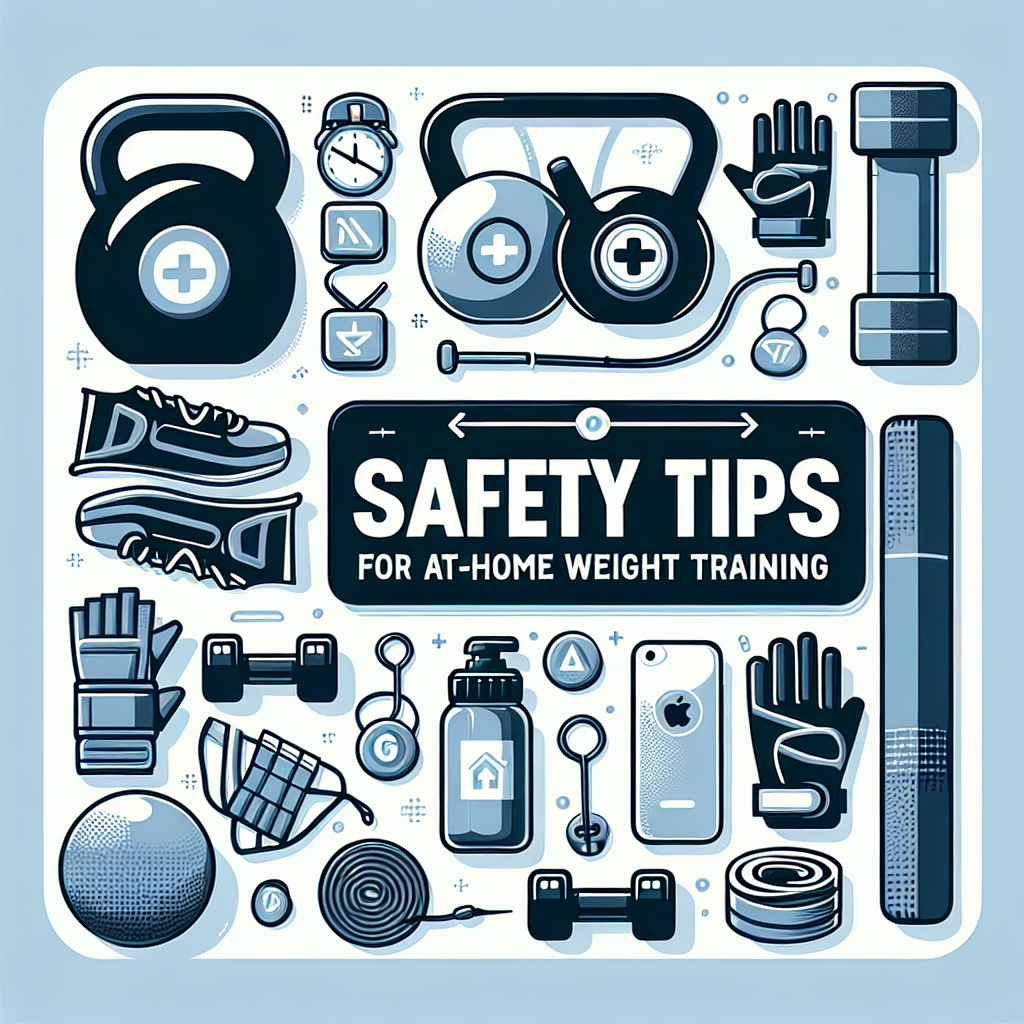
Top Safety Tips for At-Home Weight Training
Share
Top Safety Tips for At-Home Weight Training
Building your own fitness space with a home gym is a fantastic way to stay in shape on your schedule. However, safety is just as important as results when it comes to at-home weight training. Whether you’re a beginner or an experienced lifter, keeping your training area secure helps you prevent injuries and get the most out of every workout. In this guide, we’ll share the essential safety tips home gym enthusiasts need for a safe, effective training experience.
Why Is Home Gym Safety So Important?
Unlike public gyms, working out at home means you might not have a spotter or gym staff around if something goes wrong. Performing exercises without oversight increases the importance of personal responsibility and a well-organized space. Prioritizing safety helps you avoid serious injuries, unnecessary downtime, and costly repairs to your equipment or home.
Designing a Safe Workout Space
- Clear Your Floor: Make sure your workout area is free from clutter, cords, and tripping hazards before you begin any routine. A tidy environment boosts your focus and minimizes accidents.
- Use Proper Flooring: Install non-slip, shock-absorbing mats to cushion dropped weights and protect both your exercise equipment and flooring.
- Good Lighting: Adequate lighting helps you monitor your form and prevents trips and missteps. Natural light is great, but bright LED lights are a good backup.
- Ventilation: Fresh air and proper airflow help you stay cool and comfortable during intense workouts.
Essential Safety Tips for Home Gym Training
- Warm Up Thoroughly: Prepare your body for lifting by spending 5-10 minutes on dynamic stretches and light cardio. This boosts blood flow and reduces the chance of muscle strains.
- Master Proper Technique: Poor form is the leading cause of workout injuries. Always learn correct movements—either by watching video tutorials, hiring a coach, or consulting exercise guides—before adding weight.
- Don’t Overload the Bar: Start light and gradually increase your resistance. Use weights that allow you to perform exercises with good form throughout every set.
- Secure Your Weights: Always use safety collars or clips to keep plates from sliding during exercises. Double-check equipment stability before every lift.
- Listen to Your Body: If you feel pain or excessive fatigue, stop immediately and reassess. It’s better to end a session early than risk a serious injury.
- Keep Hydrated: Place a water bottle within easy reach so you can stay hydrated during longer sessions.
- Have a Spotter (if possible): For heavy lifts like bench press or squats, ask a training buddy or family member for standby support. When alone, only lift what you can safely handle and use safety stops or racks.
- Wear Proper Footwear: Use shoes with good grip and support to reduce slipping and ensure stable footing while lifting.
- Maintain Equipment Regularly: Inspect bars, cables, and bench padding for wear and tear. Tighten bolts and wipe down handles routinely to prevent malfunctions and slips.
Choosing the Right Home Gym Equipment for Safety
When shopping for the ideal weight training setup, prioritize versatility and sturdiness. All-in-one workout stations can help eliminate multiple pieces of equipment, reducing clutter and confusion. Safety features to look for include:
- Sturdy, heavy-duty construction that won’t tip or wobble
- Adjustable, lockable seats for proper ergonomic support
- Easy-to-read weight stacks and secure resistance changes
- Padded grips to prevent slips and blisters
- Integrated safety stops for solo lifters
Committing to these criteria when selecting a home gym station will keep you safer and make your workouts more enjoyable.
The Role of Organization in Home Gym Safety
Messy workout spaces increase the risk of dropped weights, damaged equipment, and even stubbed toes. Keep your home gym organized using these strategies:
- Store free weights and accessories on racks or shelving
- Hang resistance bands and tubes on hooks when not in use
- Keep cleaning wipes handy for quick post-workout cleanups
- Label drawers and bins for easy access to smaller gear
Always Follow Manufacturer Instructions
Every home gym setup is unique. Take time to review the manuals and instructional guides provided with your equipment. Proper assembly and correct usage instructions ensure you get maximum value, minimize wear and tear, and stay safe while training.
Create a Culture of Safety
Integrating safety tips home gym practices into your routine isn’t just about you—it’s also for the benefit of your family and friends. Share safety guidelines with anyone who uses the space and post a checklist of basic rules as a reminder.
Boost Home Workout Confidence with the Right Equipment
Want to maximize your strength training and minimize risks? Invest in a high-quality workout station like the Multifunction Home Gym Weight Training Workout Station White. This all-in-one unit offers versatile weight training options, a compact footprint, and comprehensive safety features—ideal for any at-home fitness enthusiast. Its sturdy design ensures stability while you train, while the ergonomic padding and thoughtful construction help reduce injury risks.
By suiting your home gym with the right tools and following practical safety tips home gym outlined above, you can enjoy powerful, safe workouts all year round. Remember, fitness is a lifelong journey—protect your progress with every session you complete at home!
Meta description: Discover the top safety tips for at-home weight training and how to create a safe home gym environment. Stay injury-free with these essential precautions.
